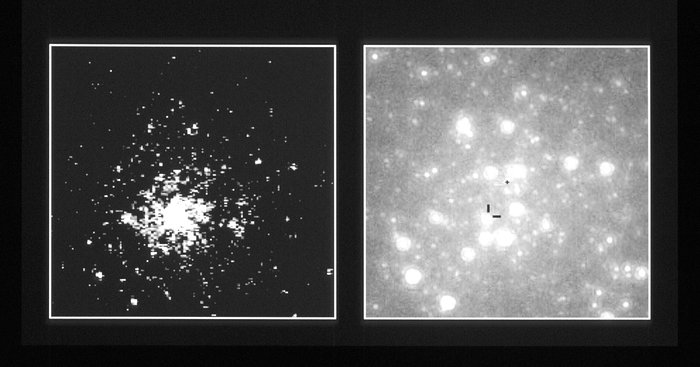Core of the globular cluster NGC 6624
This is a comparison of pictures of the core of the globular cluster NGC 6624, as imaged with the European Space Agency's Faint Object Camera aboard NASA/ESA Hubble Space Telescope. This comparison image demonstrates that Hubble's high resolution and ultraviolet sensitivity allow astronomers to pick out the faint blue counterpart to an X-ray burster buried in the globular cluster. (An X-ray burster is a class of unusual double star that is a source of violent bursts of X-rays.) HST clearly distinguishes the star from others crammed together in the dense core of the cluster.
The image on the left shows that one star far outshines all others in the cluster's core when viewed at UV wavelengths. Nearly all the fainter stars in this UV image coincide with bright stars in the image on the right, which was taken in visible (blue) light. They are all cool red stars. When the two images are lined up, the UV-bright star coincides with the inconspicuous star that is identified by tic-marks in the right-hand image. It is the bluest (and therefore hottest) star in the cluster and is at the position of an X-ray source known as 4U 1820-30 (first identified as a bright X-ray source in the 1970s during an all sky survey carried out by the Uhuru satellite).
Credit:About the Image
About the Object
| Name: | NGC 6624 |
|---|---|
| Type: | Milky Way : Star : Type : Exotic : X-Ray Binary Milky Way : Star : Grouping : Cluster : Globular |
| Distance: | 25000 light years |
| Category: | Star Clusters |
Colours & filters
| Band | Telescope |
|---|---|
| Ultraviolet |
Hubble Space Telescope
FOC |
| Optical B |
Hubble Space Telescope
FOC |
